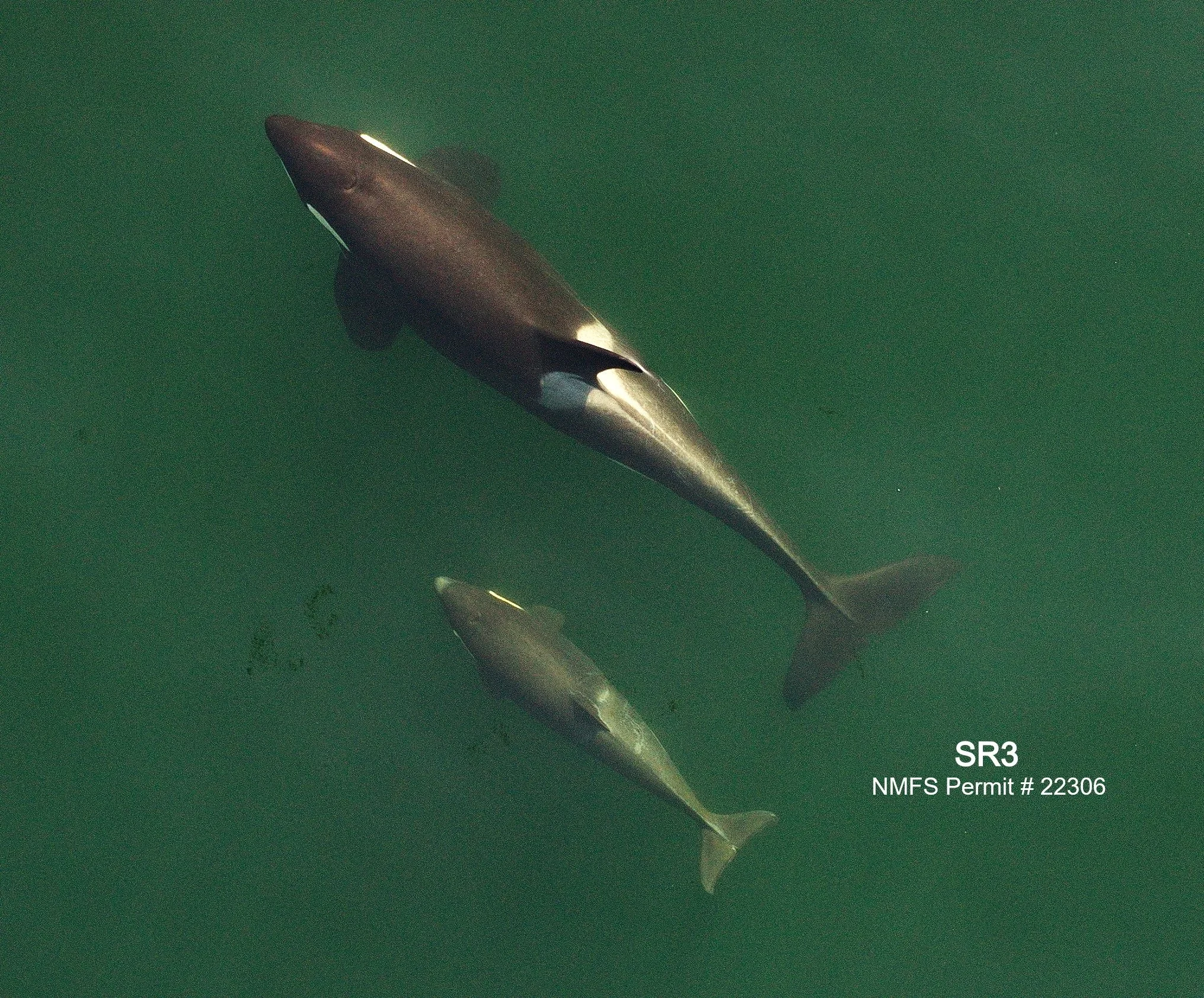Spring Update: Seasonal Health Monitoring of Southern Resident Killer Whales
Aerial image of J pod siblings J51 and J62. J62 is a recent calf of J41 that was born into the endangered Southern Resident killer whale population in December 2024. Image obtained using an octocopter drone flown non-invasively at >100ft altitude during health research conducted under NMFS research permit # 22306
In recent months, the SR3 team has continued to collect important seasonal data on the endangered population of Southern Resident killer whales (SRKWs). They have been able to non-invasively fly an octocopter drone over members of J and K pod to collect high resolution aerial images that are being measured to monitor the health of the population. This aerial photogrammetry study is now in its 18th year, making it the longest study to quantitatively monitor the health of SRKWs. SRKW use of the Salish Sea has significantly declined over the past decade, likely due to declines in the availability of Fraser River Chinook salmon, making this monitoring more and more challenging each year. Despite these challenges, the team has been extremely successful in collecting data throughout the year since 2020 and this year, in addition to regular field efforts in the San Juan Islands where the team lives, dedicated field efforts will also be conducted on Swiftsure Bank during the summer and Puget Sound during the fall.
In March 2025, SR3 shared their annual SRKW health monitoring report with management colleagues, providing annual updates on both individual and population level body condition. Results in this report were based on data that were collected in the summer and fall and analyzed in the context of the entire study period. These annual reports are shared with management agencies in both the US and Canada, with an objective of helping inform management actions aimed at the recovery of SRKWs, such as fisheries management decisions and vessel regulations. Unfortunately, the team documented a continued declining trend in SRKW body condition, with almost one third of the population found to be in poor body condition. This includes continued pod-level declines for J pod for the fifth year in a row. The majority of the whales in both J and L pods were in poor body condition for the second year in a row. SRKWs found to be in poor body condition have an elevated likelihood of mortality, making it imperative that SRKWs have access to an adequate supply of prey throughout the year. The team will continue their year round SRKW health monitoring and reporting and hope to see improvements in SRKW condition in the coming months.

